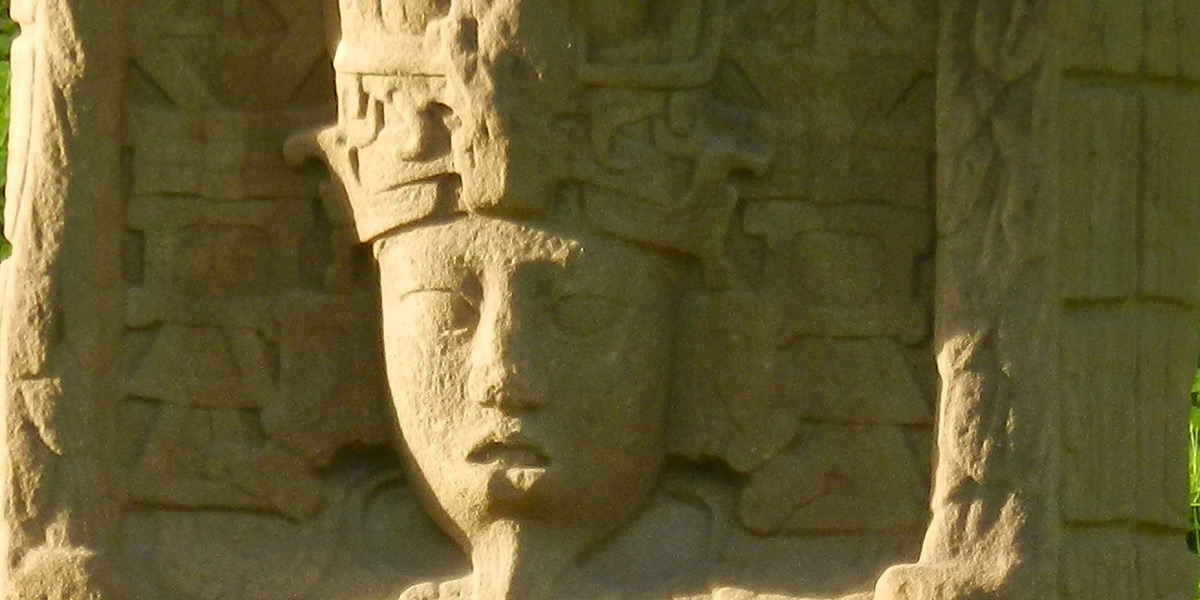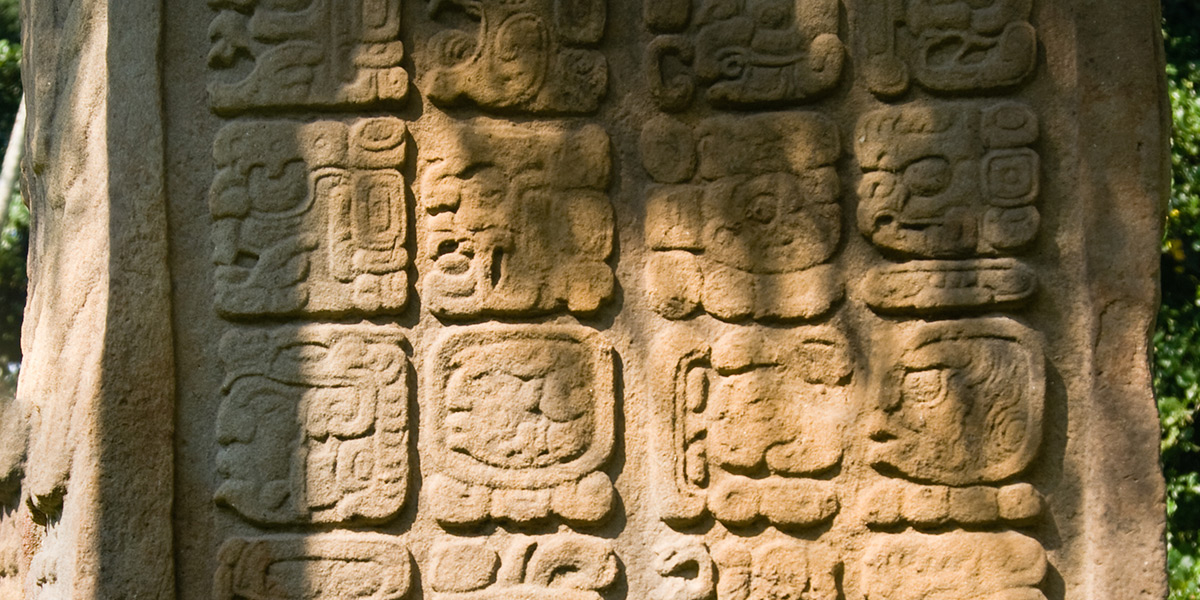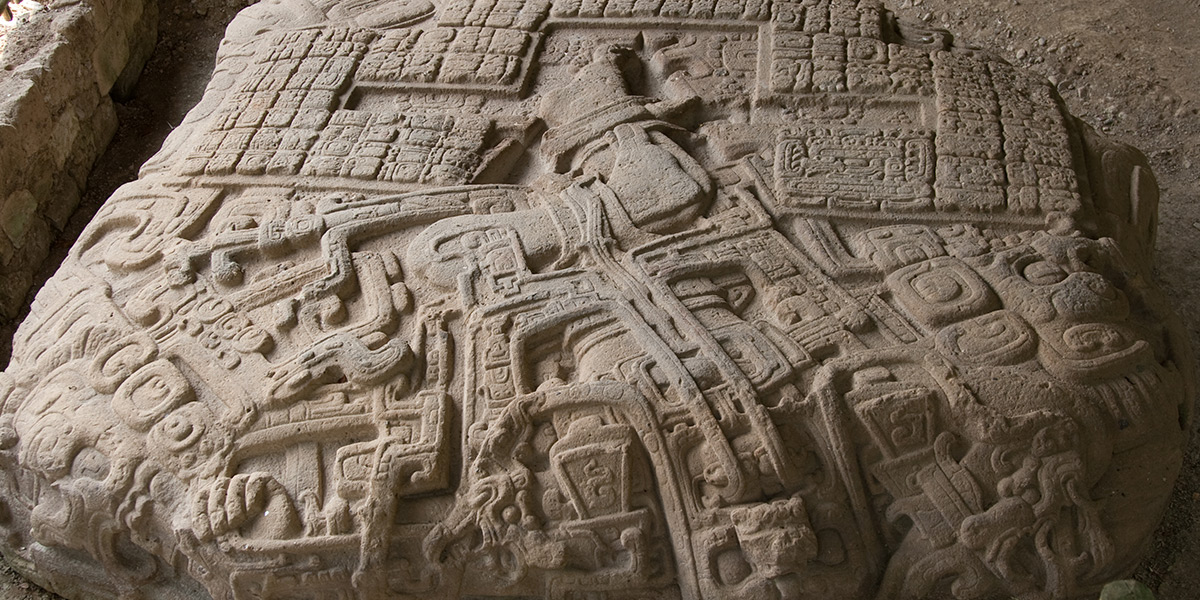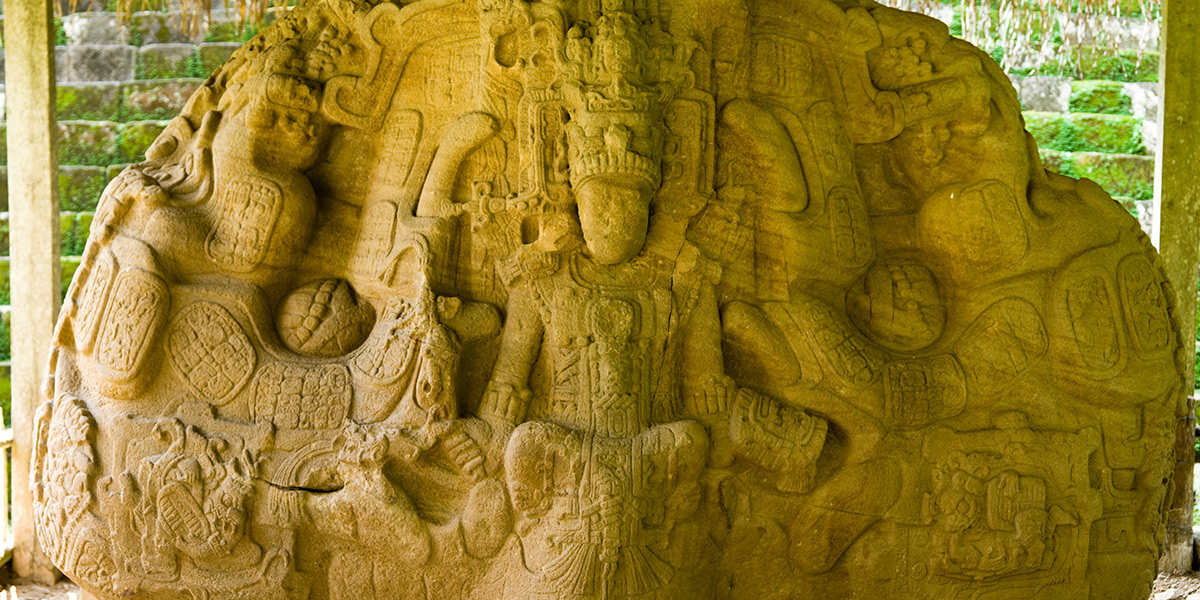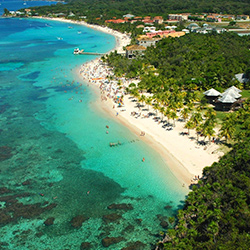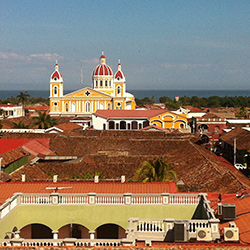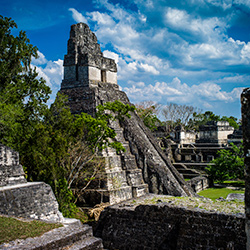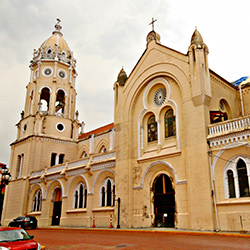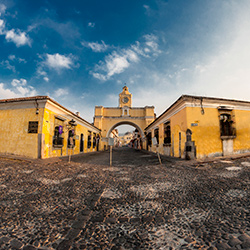AN IMPRESSIVE ANCIENT MAYA CITY FOUND IN GUATEMALA
The park is located on the west bank of the Motagua River or Rio Grande, which was an important route of communication route for the Maya. Quiriguá, along with the city of Copán in Honduras, are located in the southeastern border of the Maya lowlands. The park is home to the ancient Mayan city of Quiriguá, which is mainly characterized by its majestic stelae, the largest and best preserved of the Mayan World.
Originally, Quiriguá was under the rule of the dynasty of the city of Copán (now Honduras), but in 738 A.D., the Quiriguá dynasty managed to become independent and even subjugate the Copán dynasty, and that is when the city reached its peak. Most of the monumental constructions and the Acropolis, as well as the stelae, were erected during the following 60 years of reign of the new Quiriguá dynasty, a dynasty that dominated the region of the Copán River and the Motagua River. In this historical context Estela E is carved, which, with 10 meters of height and 55 tons of weight, constitutes the largest sculpture of all those located in the Great Plaza, a ceremonial space where you can appreciate the exceptional collection of sculptural monuments of the park. The monuments include zoomorphic altars of exceptional artistic quality, which is why it was declared in 1981 a World Heritage Site by UNESCO.
The 34-hectare Archaeological Park covers an important remnant of tropical rainforest, which makes it a last refuge for wild species native to the area. It was declared a National Monument in 1970, and a Park in 1974.
GEOPOSITION
Useful information - Don't leave anything
Entrance Fee: Residents: Q.20.00 / Foreigners: Q.80.00
Other websites with information on the Quiriguá Archaeological Park.
http://www.visitguatemala.com/
http://www.geovisitguatemala.com
http://gomundomaya.com
http://mcd.gob.gt/881/
Contact information
Contact Phone: (502) 2290-2800 Ext. 1021 y 1022
info-lobby@inguat.gob.gt
OTHER WAYS TO LIVE CENTRAL AMERICA
RECOMMENDED TOURS

